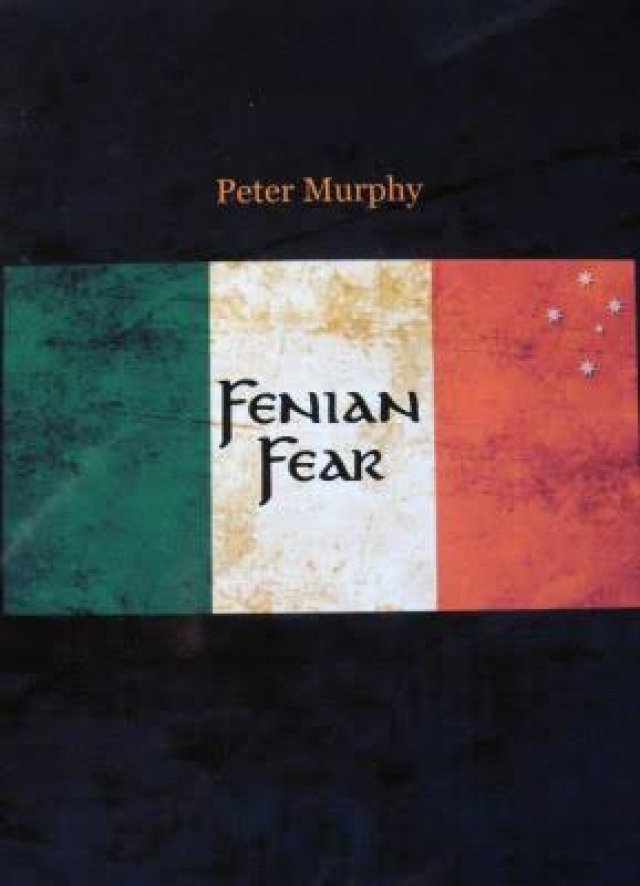
Fenian Fear
By Peter Murphy
Galeforce Promotions Publication, 2018
178pp.
“Not of sound mind when I committed me crime, some said. Others... I'd orchestrated the whole damm thing. On reflection, I do ask meself… Was I morally or legally responsible for what I had done? You see, I never set out to harm anyone, but simply to remind the British empire dat as an Irishman... I wasn't about to stand idle and watch as me fellow countrymen were being hanged for defending their own country.”
So wrote Henry James O'Farrell, an alleged Irish Fenian (as 19th century Irish revolutionaries were known), who made a failed assassination attempt on Prince Alfred, Duke of Edinburgh, in Sydney on March 12, 1868.
In Fenian Fear, author, historian and filmmaker Peter Murphy has written a work of historical fiction based on O'Farrell's real-life exploits. He poses questions about whether O’Farrell was part of an orchestrated conspiracy to murder a member of the British Royal family — and whether his trial was a miscarriage of justice.
Born in 1833 in Dublin, the son of a butcher, O’Farrell’s family immigrated in 1841 to Australia. Henry wanted to join the Roman Catholic priesthood but clashed with the hierarchy of the Australian Church, which refused to ordain him. O’Farrell suffered from alcoholism and a deterioration of his mental health. In 1867 he was picked up by police in Ballarat, Victoria after waving two pistols and muttering gibberish at a crowd.
After he was released from an asylum, O’Farrell made his way to Sydney. There, on March 12, 1868, as Prince Alfred was holding a charity picnic for sailors in the suburb of Clontarf, O’Farrell carried out his assassination attempt.
In response, an enraged mob would have lynched O’Farrell had the police not intervened and transported O’Farrell to Darlinghurst prison. While there the New South Wales colonial government searched for evidence that O’Farrell was linked to a wider Fenian plot to murder members of the British Royal family. The Colonial Secretary, Henry Parkes, was an Orangeman known for his anti-Catholic views. He pressed O’Farrell to sign a confession linking his actions to the Fenians.
The Fenians denied any involvement, but the assassination attempt fanned the flames of anti-Irish sentiment. Mobs attacked Irish businesses and homes across Australia.
Fenian Fear makes a convincing case that O’Farrell was suffering from mental illness, and should have been judged insane as the time of his assassination attempt.
Parkes and his pro-Royal loyalist associates saw Irish Catholics as "jabbering baboons" and "disruptive troublemakers". To further his sectarian agenda, Parkes tried to push through the Treason Felony Act and The Public Instructions Act, both of which would have severely curtained the rights of ordinary citizens, especially Irish Catholics.
During the process of interrogating O’Farrell, Parkes obtained a signed confession stating that his actions were part of a broader Fenian plot. O’Farrell later retracted this confession, writing another statement for Sydney Catholic Archbishop John Polding and Father Thomas O’Dwyer.
O’Farrell was clearly insane when he committed his crime. But despite a plea for clemency from Prince Alfred, O’Farrell was hanged at Darlinghurst jail on April 21, 1868. In the aftermath of O'Farrell's execution, Father O’Dwyer would play a leading role in defeating Parkes' proposed laws. He made public O’Farrell's statement that he had acted alone out of a desire to avenge the injustice of British rule in Ireland.
By narrating the story from O’Farrell’s perspective, we can see how his actions were exploited by the authorities to whip up anti-Irish sentiment and push draconian laws. More than 150 years later, there is a clear parallel with contemporary governments exploited fears of Islamic terrorism to justify draconian attacks on civil liberties, including criminalising dissent and circumventing due process.
In his book, Murphy has well-captured this important time in Australian history. Having assisted Peter FitzSimons in researching his book The Catalpa Rescue, Murphy is familiar with the Irish freedom struggle in Australia. It is therefore appropriate that he ends Fenian Fear with a quote from John Boyle’O Reilly, the Irish Fenian prisoner who who escaped from jail in Western Australia and played a crucial role in the famous 1876 Catalpa rescue of Fenian prisoners: “The Tree of Democracy will never bear fruit unless it is watered from the wells of justice, independence and fair play in the hearts of the people.”